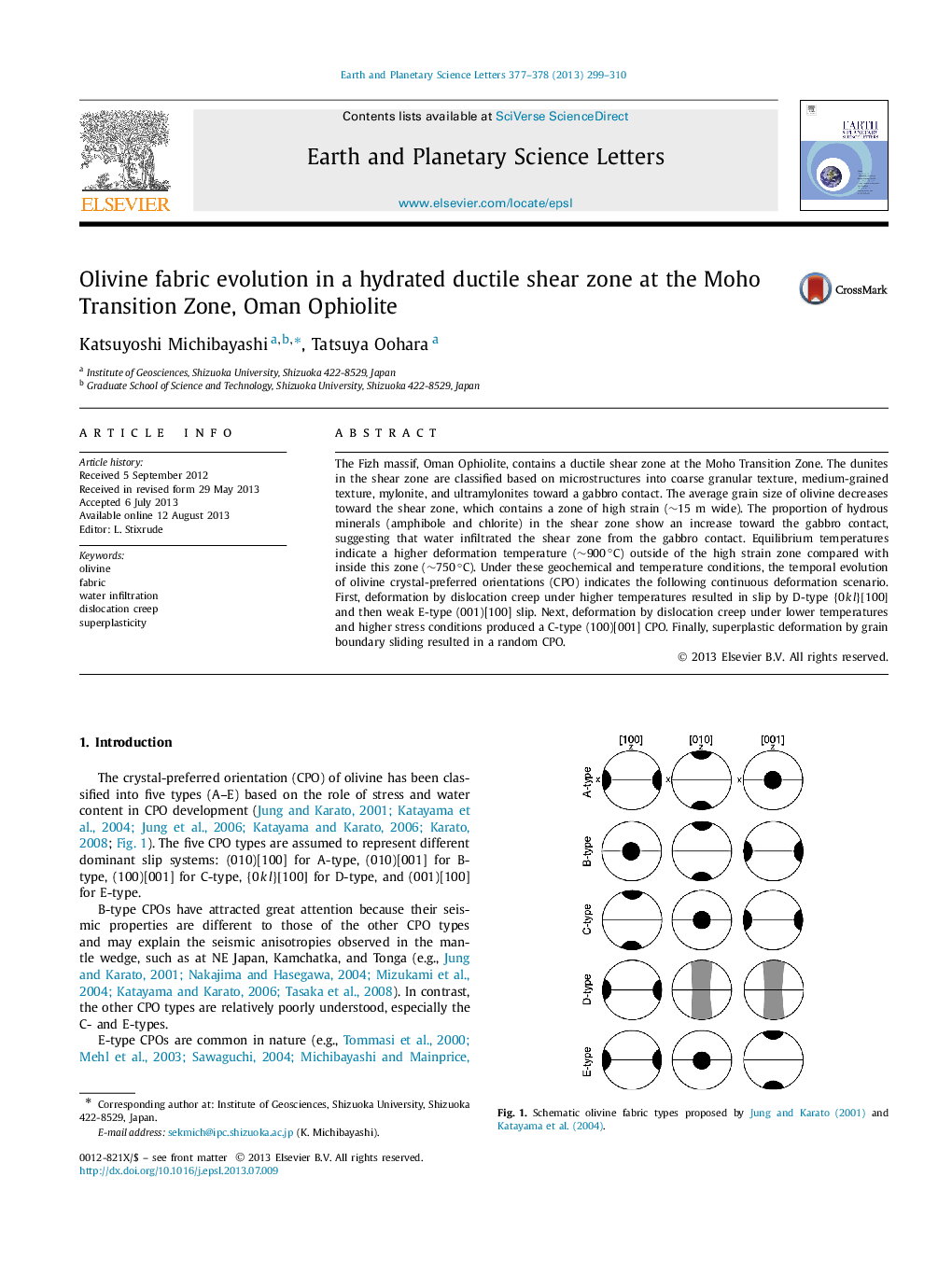| Article ID | Journal | Published Year | Pages | File Type |
|---|---|---|---|---|
| 6430033 | Earth and Planetary Science Letters | 2013 | 12 Pages |
â¢Dunites in the shear zone show olivine fabric transition from D-type to E-type, C-type and random.â¢The olivine fabric transition resulted from water infiltration during shearing.â¢The high strain zone in the shear zone was dominated by superplastic flow.
The Fizh massif, Oman Ophiolite, contains a ductile shear zone at the Moho Transition Zone. The dunites in the shear zone are classified based on microstructures into coarse granular texture, medium-grained texture, mylonite, and ultramylonites toward a gabbro contact. The average grain size of olivine decreases toward the shear zone, which contains a zone of high strain (â¼15 m wide). The proportion of hydrous minerals (amphibole and chlorite) in the shear zone show an increase toward the gabbro contact, suggesting that water infiltrated the shear zone from the gabbro contact. Equilibrium temperatures indicate a higher deformation temperature (â¼900â°C) outside of the high strain zone compared with inside this zone (â¼750â°C). Under these geochemical and temperature conditions, the temporal evolution of olivine crystal-preferred orientations (CPO) indicates the following continuous deformation scenario. First, deformation by dislocation creep under higher temperatures resulted in slip by D-type {0kl}[100] and then weak E-type (001)[100] slip. Next, deformation by dislocation creep under lower temperatures and higher stress conditions produced a C-type (100)[001] CPO. Finally, superplastic deformation by grain boundary sliding resulted in a random CPO.
